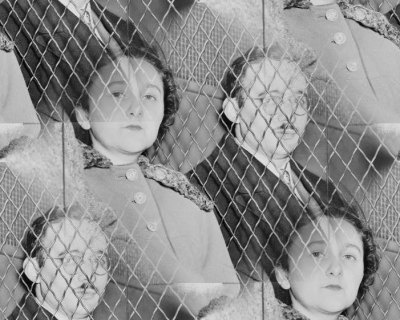Testimony sheds light on Rosenberg case

New testimony prompts questions about Ethel Rosenberg's role in spy ring. Image: World Telegram photo by Roger Higgins, made available through the Library of Congress.
Now, grand jury testimony has surfaced that bolsters theories that Ethel Rosenberg, sister of Greenglass and wife of convicted spy Julius Rosenberg, may not have been directly involved in moving information to the Soviets.
The Rosenbergs were convicted in 1951 of conspiracy to commit espionage -- specifically, passing secrets about the atom bomb to the Soviets. They were executed in 1953. The trial has been studied and debated, and the National Security Archive at George Washington University led a coalition of historians who petitioned for the release of grand jury records from the Rosenbergs’ indictment. The testimony was released July 15.
The linchpin in the case against the Rosenbergs was testimony by Greenglass, an Army machinist who had been employed at the nuclear weapons facility in Los Alamos, New Mexico. He served nine years in prison for his part in the espionage ring.
During the trial, Greenglass said that sister Ethel typed his notes for Soviet contacts. But in 1996, Greenglass told a journalist that he thought his wife, Ruth Greenglass--not Ethel Rosenberg--actually did the typing, according to an NPR report.
The newly released grand jury testimony, made public on the National Security Archive website, was given before the trial in 1950. Here, Greenglass does not mention anything about Ethel typing notes.
At one point, Greenglass testifies that Julius Rosenberg had a watch that Soviet agents had given him.
The prosecutor then asks Greenglass: “Ethel ever make reference to any citations or communications?”
Greenglass responded, “My sister has never spoken to me about this subject.”
Later, when the attorney asked if Ethel encouraged him to stay in the Army so he could continue working as a spy, Greenglass responded, “Honestly, this is a fact: I never spoke to my sister about this at all.”
But the Grand Jury testimony also depicts Ethel as involved in meetings and knowledgeable about Julius Rosenberg’s attempts to get information about the bomb.
Under questioning, Greenglass said that his wife, Ruth, visited him at Los Alamos during their wedding anniversary and brought a message from the Rosenbergs. “It seems that they -- that she [Ruth Greenglass] was up in their apartment and they asked her to ask me if I would give information on the atom bomb project.”
Greenglass testified that his wife initially turned them down. “My wife says that my sister told her at least to tell me about it and that I would want to know.”
The next day, Greenglass testified, he gave his wife “a general layout of the Los Alamos plant, explaining how it is arranged, and I gave her a list of names of scientists that worked there.”
Sources:
University of Missouri, Kansas City: Rosenberg Trial
NPR, All Things Considered: A brother’s betrayal.
National Security Archive, George Washington University: Grand Jury Testimony of David Greenglass
National Security Archive: New Rosenberg Grand Jury Testimony Released
Related:
Four phrases associated with the Cold War
If you would like to comment, contact StudyHall.Rocks or like us on Facebook and tell us what you think.

